The Human First Guide to Enterprise AI: How Conscious Leaders Navigate Team Adoption Without the Drama
The most successful AI implementations we've seen focus on human development, not technology deployment. The companies thriving with AI treat adoption as cultural evolution, not software rollout.
The $50,000 AI Adoption Trap Most Leaders Fall Into
You invest significantly in enterprise AI systems, excited about transformation ahead. Six months later, your team secretly avoids the new systems, productivity has decreased, and you're hearing whispers about "feeling replaced by robots."
What went wrong: You focused on the technology instead of the humans.
Research shows that only about 30% of digital transformations succeed. BCG’s 2020 global study found that the majority fail to deliver value, not because of technology, but because of human factors—leadership clarity, sponsorship, culture, and governance. Yet most leaders approach AI implementation like a software rollout instead of a cultural evolution.
The Monday Morning Test reveals the truth: If your team dreads Monday Mornings when using your new AI systems, you haven't implemented AI—you've implemented resistance.
Why Traditional AI Adoption Strategies Backfire for Mission-Driven Companies
Mission-driven leaders face a unique challenge. Your team didn't join your company to become more efficient—they joined to make an impact. When AI feels like productivity theater instead of purpose amplification, even your most dedicated employees will resist.
The traditional enterprise approach treats humans like variables in an optimization equation:
Deploy tool
Train users
Measure efficiency
Done
But mission-driven organizations operate differently. Your people need to understand not just how to use AI, but why it serves the mission they care about. They need to see AI as amplifying their unique contributions, not standardizing them away.
The breakthrough insight: AI adoption success isn't measured in tool utilization rates—it's measured in human elevation.
The SOUL x AI Framework: 7 Stages of Human-Centered AI Integration

Through our work with mission-driven companies, we've identified seven distinct stages of human-AI collaboration. Understanding these stages helps leaders guide their teams through adoption without drama, resistance, or productivity dips.
The Foundation: Business DNA Powered Intelligence
Every stage operates from centralized Business DNA profile accessible company-wide through dedicated AI systems. This comprehensive intelligence captures your company's methodology, decision-making patterns, values, and strategic thinking. Instead of generic AI responses, your team accesses trained intelligence that thinks like your organization.
High Adoption Stages: Building Trust Through Value
Stage 1: Access Support - "AI as Helpful Assistant"
Teams access company-wide Business DNA for immediate problem-solving
Getting unstuck, finding information, connecting with right resources
All guidance reflects your company's specific approach and methods
Stage 2: Find Information and Answer Questions - "AI as Knowledge Amplifier"
Teams ask complex questions about policies, project histories, specialized knowledge
Responses reflect your organization's methodology and values
Detailed, contextual answers that sound like they came from your most experienced leaders
Stage 3: Request Data - "AI as Intelligence Curator
Personalized data analysis through Business DNA profile
Insights align with company's strategic priorities and analytical frameworks
Data delivered in your organization's preferred format and language
Medium Adoption Stages: Building Competence Through Integration
Stage 4: Perform Simple Transactions - "AI as Process Accelerator"
Business DNA powered LLMs create SOPs for routine workflows
Consistency with your company's approach while streamlining execution
Team members complete routine tasks efficiently while maintaining quality standards
Stage 5: Perform Complex Transactions - "AI as Orchestration Partner"
Comprehensive SOPs for multi-step processes across departments
Coordination reflects your company's collaboration style and quality standards
Complex processes guided by SOPs that maintain organizational standards while reducing manual coordination
Advanced Adoption Stages: Building Mastery Through Collaboration
Stage 6: Provide Analytics and Insights - "AI as Strategic Advisor"
Strategic analysis combining data insights with your company's decision-making frameworks
LLM becomes strategic analyst, surfacing patterns and trends for major business decisions
Analysis uses your organization's analytical approach and values
Stage 7: Support Work Completion - "AI as Creative Collaborator"
LLM actively participates in creating deliverables using your methodology, voice, and quality standards
Helps create proposals, presentations, research synthesis, and strategic frameworks
Output reflects your company's approach while expanding creative capacity
The Business DNA Difference: Why Our Approach Works
Instead of implementing generic tools, we embed your company's unique methodology, decision-making patterns, and values directly into AI systems.
The result: AI doesn't feel like foreign technology—it feels like having access to your strategic thinking 24/7.
Strategic Intelligence Advantage
Traditional AI tools give generic responses. Business DNA powered AI thinks like your company:
Knows your methodology: AI recommendations align with proven processes
Understands your values: Every suggestion reinforces what matters to your organization
Speaks your language: Communications maintain authentic voice and tone
Preserves your culture: Solutions strengthen rather than compromise team dynamics
Real-World Impact: The Transformation Timeline

Depending on the task and maturity of adoption, teams typically see up to 40%
productivity gains.
Controlled experiments show:
Writing tasks: ~40% faster with ~18% quality improvement (MIT study, 2023)
Customer support: ~14% average lift, up to 35% for novices (Stanford/MIT, QJE 2025)
Software development: ~55% faster on standardized coding tasks (GitHub Copilot study, 2023)
Knowledge work suites: ~26 minutes saved per user per day in UK government Copilot pilots (UK Department for Education report, 2024)
In our own implementations of human-centered AI, we’ve consistently seen results such as:
50% faster strategic decisions as AI amplifies rather than replaces leadership thinking
Up to 90% faster asset creation in templated workflows, while maintaining quality and authenticity
40% productivity increases without sacrificing employee satisfaction
Monday Morning Test success: teams feel energized because AI elevates, rather than diminishes, their contributions
The Change Management Framework That Actually Works
Phase 1: Foundation Building
Focus: Psychological safety and vision alignment
Stakeholder psychology assessment to understand individual motivations
Address AI concerns through open dialogue sessions
Connect AI to personal and mission fulfillment
Identify and develop champions across departments
Phase 2: Competence Development
Focus: Skill building through meaningful application
Role-specific AI training using actual business scenarios
Peer learning circles where early adopters share insights
Progressive complexity introduction starting with high-value, low-risk applications
Regular feedback loops and system refinements
Phase 3: Culture Integration
Focus: Making AI adoption part of "how we do things here"
Document and share success stories across organization
Embed AI seamlessly into standard processes
Develop advanced applications for power users
Measure both productivity and satisfaction metrics
Warning Signs: When AI Adoption is Going Sideways
Red flags to watch for:
Compliance theater: People use AI because they have to, not because it helps
Parallel system problem: Teams maintain old processes "just in case"
Quality concerns: Output feels generic or doesn't meet company standards
Culture erosion: AI usage decreases human collaboration
Leadership bottleneck: AI decisions keep flowing back to founders instead of empowering teams
Course correction strategies:
Return to values: Reconnect AI usage to mission and purpose
Increase customization: Embed more company-specific intelligence into Business DNA profiles
Enhanced coaching: Focus on individual team member benefits
Highlight personal wins: Show how AI makes each person's work more enjoyable
Adjust complexity: Ensure current stage mastery before advancing
The ROI Formula That Matters: Human + AI > Human vs. AI
Successful AI adoptions don't measure success through efficiency metrics alone. They track human elevation indicators:
Traditional Metrics (Still Important)
Task completion time
Error reduction rates
Process optimization
Cost per outcome
Human Elevation Metrics (Game Changers)
Strategic thinking time increased
Creative project engagement
Cross-departmental collaboration quality
Professional growth acceleration
Mission alignment satisfaction
Monday Morning Test scores
Your Strategic Steps Forward
Step 1: Assessment and Vision Setting
Map each team member's AI hopes and concerns
Document existing workflows and pain points
Connect AI potential to individual and organizational mission
Step 2: Champions Development and Pilot Programs
Select early adopters across different departments
Begin with Phase 1-3 applications in high-value, low-risk areas
Create regular feedback loops to address concerns and celebrate wins
Step 3: Systematic Rollout and Skill Building
Gradual department-by-department expansion based on readiness
Move through stages based on mastery, not timeline
Embed AI usage into standard operating procedures
Step 4: Optimization and Advanced Applications
Progress to strategic advisor and creative collaborator applications
Customize Business DNA intelligence based on real-world usage patterns
Build foundation for organization-wide AI fluency
The Choice: AI Adoption vs. AI Evolution
Path A: AI Adoption
Deploy tools, train users, measure efficiency. Risk resistance, culture erosion, and parallel systems.
Path B: AI Evolution
Embed your strategic intelligence into systems that think like you, elevate your team to their highest potential, and create Monday morning excitement about the work ahead.
The companies that thrive in the AI era won't be those with the most advanced tools—they'll be those who created the most elevated humans.
The question isn't whether your team will work with AI. The question is whether AI will amplify their genius or diminish their humanity.
The question isn't whether your team will work with AI. The question is whether AI will amplify their genius or diminish their humanity.


